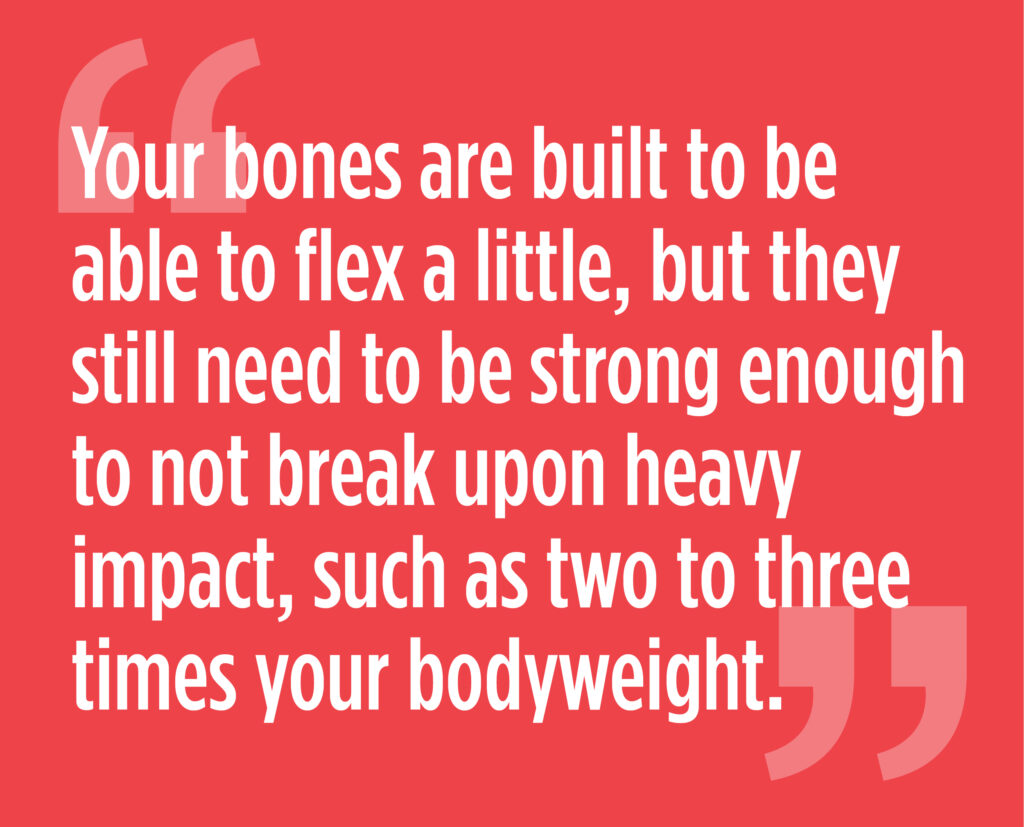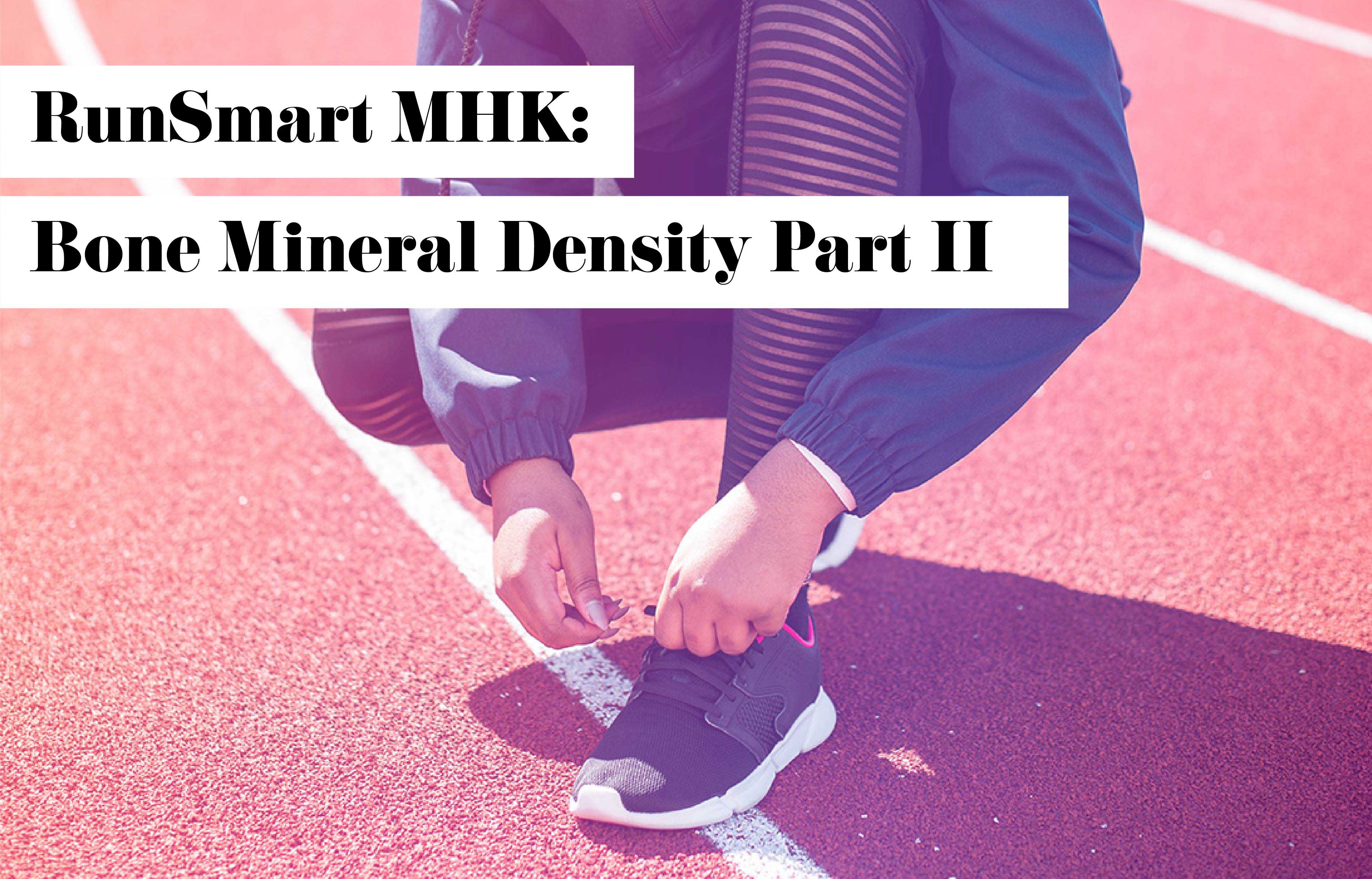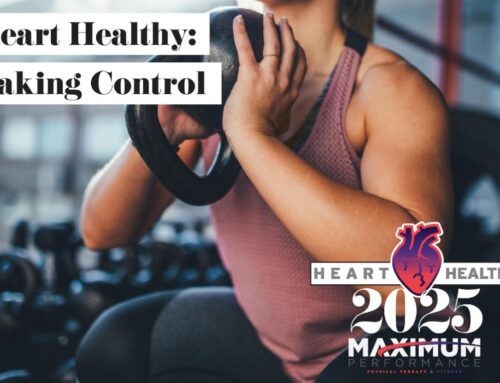Bone Mineral Density Part II
Brenton Leighow, MS, CSCS, GFS,
Maximum Performance Personal Trainer
Welcome to part two of three of our Bone Mineral Density blog series! We’ll get to the good part in this one. The introduction of strength training has been shown by countless studies to increase BMD. This is due to to migration of osteoblasts, which manufacture and secrete proteins that are deposited in the spaces between bone cells. This process can be lengthy and requires constant exposure to the Minimal Essential Strain (MES), which is the threshold stimulus needed to initiate new bone formation. By continuing to exceed this threshold, osteoblasts migrate to the area of bone that’s experiencing the stress. This can take up to six months (1), but it all begins within the first few workouts.

Think of it as little Roomba vacuums moving along your bones, working their way towards the weak areas to drop off nutrients. Your bones are built to be able to flex a little, but they still need to be strong enough to not break upon heavy impact, such as two to three times your bodyweight (2). In an article published in the Saudi Journal of Sports Medicine, it’s noted that stress fractures are one of the most feared running injuries, and more than one in five runners will sustain a stress fracture in their athletic careers (5). This is a scary finding, but several other research articles have noted that with the implementation of a strength training program, the probability of injury decreases. It all revolves around the MES and making sure you achieve it with proper loading. We’ll cover that in more detail next time.
I hope both this post and the last have helped clarify the differences between healthy bone structure, osteopenia and osteoporosis. In our next post, we’ll talk about how to expose your bones to the MES in a safe way, which will lead to increased BMD and, more importantly, a decreased probability of being sidelined with a fracture. If you have any questions or comments, you can email us at fitness@maximumperform.com or brentonl@maximumperform.com. We’re always happy to help you and discuss your questions in further detail!
Citations
- “Essentials of Strength Training and Conditioning (Fourth Edition). Human Kinetics”
Haff, Triplett, N. T., & National Strength & Conditioning Association. (2016). - “Strength Training for Long-Distance Triathletes: Theory to Practice”
Kate M. Baldwin, PhD,1,2 Claire E. Badenhorst, PhD,3 Ashley J. Cripps, PhD,1 Grant J. Landers,PhD, 4 Robert J. Merrells, Grad Dip Sc,1 Max K, Bulsara, PhD5 and Gerard F. Hoyne, PhD1 1 School of Health Sciences, University of Notre Dame, Fremantle, Australia; 2 Discipline of Exercise Science, Murdoch University, Australia, 3 School of Sport, Exercise and Nutrition, College of Health, Massey University, Auckland, New Zealand; 4 School of Human Sciences, University of Western Australia, Crawley Australia; and 5 Institute for Health Research, University of Notre Dame, Fremantle, Australia - Conroy, BP, Kraemer, WJ, Maresh, CM, and Dalsky, GP. Adaptive responses of bone to physical activity. Med Exerc Nutr Health 1:64-74, 1992
- Kanehisa, H, and Fukunafa, T. Profiles of musculoskeletal development in limbs of college Olympic weightlifters and wrestlers. Eur J Appl Physiol 79″414-420, 1999
- Vasiliadis, A. V. (2017). Common stress fractures in runners; An analysis. Saudi Journal of Sports Medicine , 17 (1), 1.
https://doi.org/10.4103/1319-6308.197457




